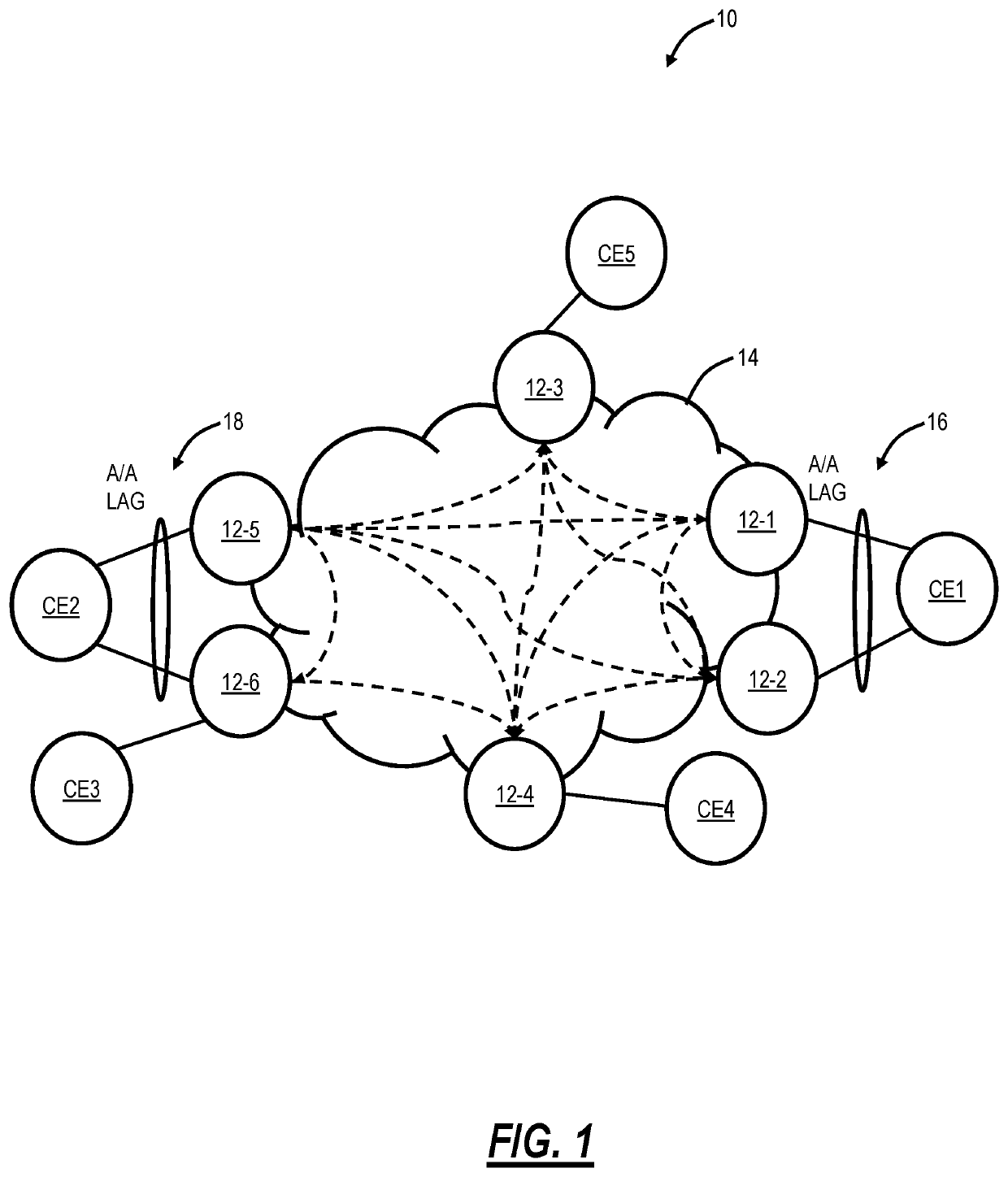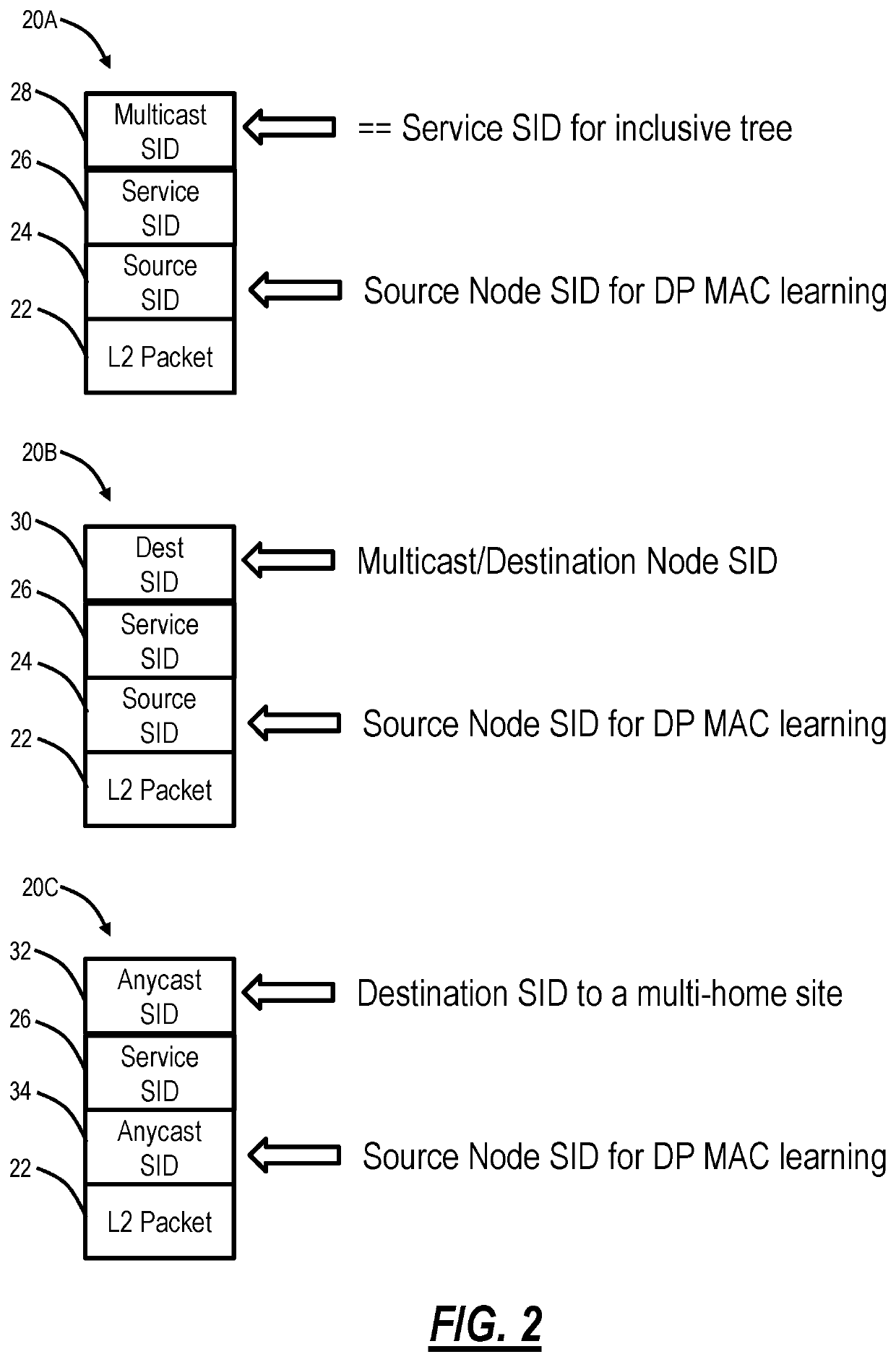NG-VPLS E-tree signaling using Segment Routing
a technology of segment routing and etree signaling, applied in the field of next-generation virtual private lan services (ngvpls) etree signaling using segment routing, can solve the problems of slow reaction, slow control plane mac learning, and slow reaction, and achieve the effect of fast convergence and scaling through conversational learning, and simple bgp overhead of evpn control plane overhead
- Summary
- Abstract
- Description
- Claims
- Application Information
AI Technical Summary
Benefits of technology
Problems solved by technology
Method used
Image
Examples
example node
[0080]FIG. 11 is a block diagram of an example implementation of a node 100, such as for the node 12 in the network 10 and the Segment Routing network 14. Those of ordinary skill in the art will recognize FIG. 11 is a functional diagram in an oversimplified manner, and a practical embodiment may include additional components and suitably configured processing logic to support known or conventional operating features that are not described in detail herein.
[0081]In an embodiment, the node 100 is a packet switch, but those of ordinary skill in the art will recognize the systems and methods described herein can operate with other types of network elements and other implementations that support SR networking. In this embodiment, the node 100 includes a plurality of modules 102, 104 interconnected via an interface 106. The modules 102, 104 are also known as blades, line cards, line modules, circuit packs, pluggable modules, etc. and generally refer to components mounted on a chassis, she...
example controller
[0085]FIG. 12 is a block diagram of an example controller 200, which can form a controller for the node 12. The controller 200 can be part of the node 12, or a stand-alone device communicatively coupled to the node 200. Also, the controller 200 can be referred to in implementations as a control module, a shelf controller, a shelf processor, a system controller, etc. The controller 200 can include a processor 202 which is a hardware device for executing software instructions. The processor 202 can be any custom made or commercially available processor, a central processing unit (CPU), an auxiliary processor among several processors associated with the controller 200, a semiconductor-based microprocessor (in the form of a microchip or chipset), or generally any device for executing software instructions. When the controller 200 is in operation, the processor 202 is configured to execute software stored within the memory, to communicate data to and from the memory, and to generally con...
PUM
 Login to View More
Login to View More Abstract
Description
Claims
Application Information
 Login to View More
Login to View More - R&D
- Intellectual Property
- Life Sciences
- Materials
- Tech Scout
- Unparalleled Data Quality
- Higher Quality Content
- 60% Fewer Hallucinations
Browse by: Latest US Patents, China's latest patents, Technical Efficacy Thesaurus, Application Domain, Technology Topic, Popular Technical Reports.
© 2025 PatSnap. All rights reserved.Legal|Privacy policy|Modern Slavery Act Transparency Statement|Sitemap|About US| Contact US: help@patsnap.com



